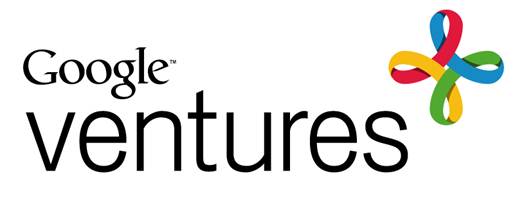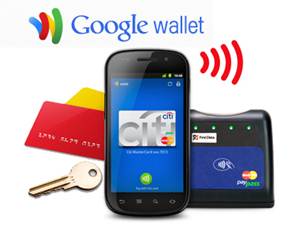Searching
for Google’s future (Part 3)
Google’s big ventures

Google can tell a lot
about us by the things we buy, but the reverse also applies: you can tell a lot
about Google’s priorities by the firms it acquires. In the last year Google has
bought price comparison tools, discount coupon services, loyalty card systems,
voice recognition and facial recognition technology, and various social media
services. It’s a focused selection that’s clearly biased towards mobile
devices, mobile content, mobile advertising and mobile payments, and it’s clear
where Google believes its near-future growth will come from.
For the longer term, we
need to look at a different hit of Google: Google Ventures. Established in
2009, Google Ventures’ mission is to invest some of Google’s money in exciting
new businesses, businesses that don’t necessarily fit with Google’s current
business strategy.
Google says it doesn’t
expect firms it invests in to use its products or change their relationship
with Google, and it denies that Ventures is “a strategic vehicle to make future
acquisitions easier’ Nevertheless, some of its investments are in exactly the kinds
of companies it likes to buy For example, as “the world’s leading portfolio of
coupon and deal websites”, WhaleShark Media would work with Google Wallet and
Offers, while VigLink’s link tracking system would get on well with Google
Analytics. However, while app developers and cloud computing services are well
represented, some of its investments are much more ambitious.
Google Ventures
investments tend to fall into one of five categories: consumer products, business
services, education, green technology and medical science. It’s a diverse mix,
but they all have something in common: Google hopes to make money from them
all.
The first two categories,
consumer products and business services, are where you’ll find the websites and
tools that are closest to Google’s existing applications. Google has invested
in Kabam, which publishes massively multiplayer social games (MMSGs); Miso,
which is for engaging with other people while watching TV; lawPivot, a legal
Q&A service for startups; Rocket Lawyer, an online legal advice shop; HubSpot,
which makes marketing software; SweetLabs, which brings web apps to the
desktop; ShopBot, which tracks the price of products in online shops; SCVNGR,
which adds a gaming layer to real-world location data; and Signpost, a
crowdsourced deal-spotting service. Other investments in this category include
mobile to-do lists, cloud services for mobile app developers, web data timeline
services and ant malware technology.
The educational category
includes some interesting sites and services too. For example, there’s Airy
Labs, which creates educational games for primary school-age children; English
Central, a cloud-based language learning system that uses web video to improve
users’ skills; and Miso Media, whose software helps teach people to play
musical instruments. In the case of Miso Media, Google Ventures is one of
several backers, including Justin Timberlake. You can see why Google decided to
invest in these firms. They’re good ideas, and in many cases they’re already
doing decent business. The big bets, however, are in green tech and medical
science.
Gene genie
It’s perhaps fitting that
a firm whose mission is to organise the world’s information and make it
universally accessible and useful” is interested in the most useful data of
all: DNA. In 2009, Google founder Sergey Brin invested $10million in genome
firm 23andme. It wasn’t the first time he and his company had helped the
startup: Google invested S3.9million in the firm in 2007, and sonic of that
money was used to repay a previous Brin loan of $2.6million. Google isn’t the
only investor - others include giant pharmaceutical corporations and venture
capital firms - but it’s definitely the best-connected: 23andme was set up by
Ann Wojcicki, who happens to be Sergey Brin’s wife.
23andme’s mission is “to
be the world’s trusted source of personal genetic information”, and it takes
its name from the 23 pairs of chromosomes that make up the human genome. By
combining DNA analysis and web-based tools, 23andme can help trace ancestors or
work out whether you’re likely to get diabetes. Simply provide some saliva in
the kit, send it off, wait a few weeks and then log in to find out all about
your genes.
Google has also invested
in another DNA analysis firm, Navigenics, which offers genetic analysis and
counselling for people who want to know their genetic risk factors or whether
their DNA will make some treatments more effective than others.

Google’s driving ambition
Why is Google
making driverless cars?
Self-driving
cars seem an odd thing for Google to work on, but you can’t fault its
commitment - its robotic vehicles have racked up hundreds of thousands of
miles. The seven cars use Google’s enormous data centres and mapping technology
to work out where they are, and while every car has a human driver to prevent
disaster, the long term vision is for cars that get you around without human
involvement.
What’s in it
for Google? Pundits have suggested that self- driving cars would boast Android
interfaces and on-board internet connections, letting you search the web,
access Gmail, watch YouTube or catch up with Google Reader while you commute,
and CEO Larry Page admitted as much at September’s Google Zeitgeist conference.
“People spend two hours a day in the US commuting, which is a huge amount of
time they don’t need to be spending,” he said. “They could be doing useful
things in that time, or watching TV, or looking at ads, or whatever.” However,
project head Sebastian Thrun says it’s more altruistic. Writing on the official
Google blog, he said that “Our goal is to help prevent traffic accidents, free up
people’s time and reduce carbon emissions by publicly changing car use.” Thrun’s
motivation is more personal - when he was 18, his best friend died in a car
accident, and he has devoted his life to improving car safety.
Creating
self-driving cars is an enormous challenge that involves video cameras, radar
sensors and laser range finders in addition to GPS and mapping software, and
while Google’s cars have successfully navigated around a small number of
locations, it’ll be at least a decade before self-driving cars are effective
and cheap enough for everyday use. Even then, we might not accept them: while
hundreds of people die on the roads every day (the US Department of
Transportation says one person dies on American roads every 16 minutes) it
isn’t hard to imagine a single driverless car fatality causing demands for the
technology to be banned.
Everything’s gone green
As one of the planet’s
biggest computer users, Google has long worried about its environmental
footprint (not to mention its electricity bill), and has designed its data
centres to use as little energy as Possible. It says its data centres use 50
per cent less energy than the norm, and that 25 per cent of its energy comes
from renewable sources. i1at figure is expected increase next year.
Google isn’t just
interested in its own carbon footprint though - it’s interested in yours too.
The firm has invested millions in renewable energy projects, and Google
Ventures also invested in technologies that could reduce energy use further.
It’s put money into Transphorm, which creates power modules that eliminate up
to 90 per cent of electricity conversions — modules that could he used in air
conditioners, hybrid cars and solar panels - and helped Next Autoworks with its
plans for a safe, high-quality, fuel-efficient car for the American market,
while Silver Spring Networks’ smart grid technology is designed to help firms
monitor and improve their energy efficiency while reducing their carbon
emissions.
Googie Ventures is interested
in smaller steps, too: it’s invested in RelayRides, the world’s first
neighbour- to-neighbour car sharing service, which could help reduce
congestion. If climate change still ends up cooking the planet, Google still
has a role - it’s invested in WeatherBill, which provides “technologically
advanced weather insurance products”.